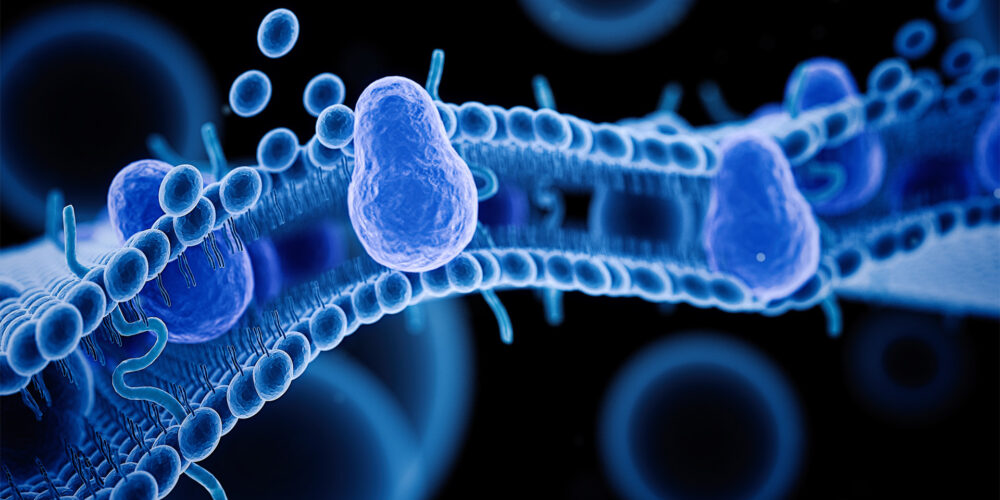Using MDCK-MDR1 cells (a transfected cell line overexpressing human P-glycoprotein (multidrug resistance 1; MDR1)) to evaluate whether your compound is a substrate of the P-glycoprotein (P-gp) efflux transporter is crucial in early drug discovery/development as such knowledge feeds into both:
- A holistic mechanistic understanding around the prediction of intestinal absorption of oral drugs gained from Caco-2 permeability screens, as well as,
- Enabling a prediction of central nervous system (CNS) permeability (penetration) across the tight epithelial cells of the blood-brain barrier, since such penetration is restricted to a large extent by P-gp mediated efflux1,2.
MDCK-MDR1 permeability is included in our portfolio of in vitro ADME drug transporter screening services.
Cyprotex delivers consistent, high quality data with cost-efficiency
that comes from a highly automated approach. We offer permeability screening services as well as full regulatory DDI and drug transporter packages according to FDA guidance and EMA guidance.
Introduction
MDCK-MDR1 permeability assay:
- Cyprotex’s MDCK-MDR1 cells originate from the transfection of Madin Darby Canine Kidney (MDCK) cells with the human MDR1 gene (ABCB1)3, the gene encoding for the efflux transporter, human P-gp.
- Assessing flux in both directions (apical to basolateral (A-B) and basolateral to apical (B-A)) across the polarized cell monolayer enables calculation of apparent permeability, as well as determination of an efflux ratio, which provides an indicator as to whether a compound undergoes P-gp mediated active efflux. As a follow-up to any observed efflux in the MDCK-MDR1 permeability assay, confirmation of the compound as a substrate of P-gp can be established using our P-gp substrate identification assay, performed with and without a known reference P-gp inhibitor.
- Due to the formation of tight junctions and overexpression of P-gp, the polarised MDCK-MDR1 cell monolayer test system is a suitable surrogate for the epithelial cells of the blood-brain barrier, and as such the MDCK-MDR1 permeability assay can be a useful predictor of CNS permeability4,5.
Protocol
MDCK-MDR1 Permeability Assay Protocol
The Cyprotex MDCK-MDR1 permeability assay can be performed in a range of study formats to suit your needs, our default assay conditions are listed below. If you require more information, or are interested in a bespoke study setup, please contact our team.
Q&A
Please provide an overview of the Cyprotex's MDCK-MDR1 permeability assay.
MDCK-MDR1 cells are grown on a semi-permeable membrane in a Transwell™ system plate and form a confluent polarized monolayer over 4 or 5 days prior to the experiment. The test compound is added to the apical side of the cell monolayer (A-B) and the flux of the compound across the monolayer is monitored after a 60-minute incubation period. To study drug efflux, it is also necessary to investigate transport of the compound from the basolateral compartment to the apical compartment (B-A) and calculate an efflux ratio.
The apparent permeability coefficient (Papp) is calculated from the following equation:
Where Papp is the apparent permeability coefficient (cm/s x10-6), dQ/dt is the rate of permeation of the drug across the cells (pmol/sec), C0
is the donor concentration at time zero (pmol/mL) and A is the area of the cell monolayer (cm2).
How do I interpret data from the MDCK-MDR1 permeability assay?
There are several ways in which the data from the MDCK-MDR1 permeability assay can be used. Firstly, an indication of P-gp mediated drug efflux of compounds can be obtained (for follow up in a P-gp substrate identification assay). Secondly, the compounds can be ranked by their A-B Papp values which can give an indication of the extent of permeation across the blood-brain barrier.
How is the efflux ratio calculated, and how do I interpret this value?
How do you know if the cell monolayer integrity has been maintained throughout the study?
Lucifer yellow, a paracellular membrane integrity marker, is co-incubated with the test compound at the start of the experiment. At the end of the study, the extent of the lucifer yellow permeation is measured against a predetermined acceptance threshold.
How and why is the % recovery calculated?
The % recovery can be useful in interpreting MDCK-MDR1 data. If the recovery is very low, this may indicate problems with poor solubility, non-specific binding of the compound to the assay plates7 or accumulation of the compound in the cell monolayer8.
References
1) Alavijeh, M.S et al. (2005) Drug metabolism and pharmacokinetics, the blood-brain barrier, and central nervous system drug discovery. Neurotherapeutics 2, 554–571
2) FDA Guidance for Industry – In Vitro Drug Interaction Studies - Cytochrome P450 Enzyme- and Transporter-Mediated Drug Interactions (January 2020)
3) Pastan I et al. (1988) A retrovirus carrying an MDR1 cDNA confers multidrug resistance and polarized expression of P-glycoprotein in MDCK cells. Proc Natl Acad Sci USA 85; 4486-4490
4) Wang Q et al. (2005) Evaluation of the MDR-MDCK cell line as a permeability screen for the blood–brain barrier. Int J Pharmaceut 288; 349-359
5) Jiang, L. et al. (2022) Application of a high‐resolution in vitro human MDR1‐MDCK assay and in vivo studies in preclinical species to improve prediction of CNS drug penetration. Pharmacology Research & Perspectives 2022; 10: 4–12
6) Zhou L et al (2009) The effect of breast cancer resistance protein and P-glycoprotein on the brain penetration of flavopiridol, Imatinib Mesylate (gleevec), prazosin, and 2-methoxy-3-(4-(2-(5-methyl-2-phenyloxazol-4-yl)ethoxy)phenyl)propanoic acid (PF-407288) in mice. Drug Metabolism and Disposition 37: 946–955
7) Cai X et al (2012) Approach to improve compound recovery in a high-throughput Caco-2 permeability assay supported by liquid chromatography–tandem mass spectrometry. Journal of Pharmaceutical Sciences 101: 2755–2762
8) Bednarczyk D, Sanghvi MV (2019) The impact of assay recovery on the apparent permeability, a function of lysosomal trapping. Xenobiotica 50: 753–760
Downloads
- Cyprotex ADME Guide 5th Edition >
- Cyprotex DDI Regulatory Guide 3rd Edition >
- Cyprotex MDCK-MDR1 Permeability Assay Factsheet >

